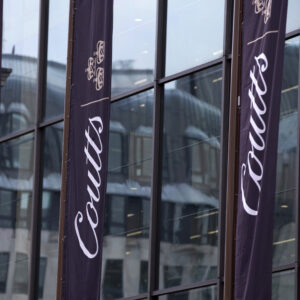Giovanni Becchere
Head of Multi-Assets, ABN AMRO Investment Solutions. Based in: Paris, France

“With almost six months experience of the coronavirus, countries around the world and their citizens have made adjustments. So much so, that during the last couple of months, restrictions began to be lifted and economies began to recover. While infections are starting up again in some places in Europe, although at lower levels, it is not expected that comprehensive lockdowns will again be imposed. The momentum of reopening economies has boosted stockmarkets with the US even able to hit new highs. We still see potential in the equity markets as we expect global activity to keep restarting faster than expected. In this context we keep our portfolio unchanged with an overweight in equities and a prudent stance on fixed income.”
Luca Dal Mas
Senior fund analyst, Aviva Investors. Based in: London, UK

“August was another positive month for markets, with the S&P500 reaching a new high while other markets have been less sanguine. On the fixed income front, government bond yields were stable, with only US rates rising in a reaction to a more dovish stance that transpires from the Fed’s Framework Review which introduced tweaks to inflation and employment targets. Manufacturing PMI data signalled a firm recovery in the US driven by new orders, while in Europe data has followed a different path depending on the state’s ability to keep the virus under control, with France and Spain lagging. We have not implemented any meaningful change in our portfolios, being comfortable with the current exposure.””
Kelly Prior
Investment Manager in the Multi-manager team, BMO Global Asset Management. Based in: London, UK

“August saw markets continue to grind to heady heights led by growth behemoths that have become the darlings of the retail buyer. The potential for a vaccine and the anticipated positive increase in the economic numbers fuelled a classically illiquid summer market, while bonds paused for breath as the fear of inflation crept to the forefront of investors’ minds. A surge in value stocks in Japan saw the Eastspring Japan Dynamic lead the portfolio selection, outperforming the base market which led global equity markets. The M&G Global Macro Bond fund, which has taken a longer duration defensive stance in recent months, gave back some ground as the loser in the portfolio.”
Gayathri Devarakonda
Fund Research Analyst, Deutsche Bank Wealth Management. Based in: London, UK

“Global equities performed well in August as economies continued to open up despite fears of a second wave, especially in Europe. The NASDAQ 100 and S&P 500 extended their stellar performances, returning 11.2 per cent and 7.2 per cent respectively. Fixed income had a lacklustre month are investors moved into risky assets. US treasuries lost ground and returned -1.2 per cent in. Silver continued its rally, returning 15 per cent in August and a phenomenal 58 per cent in year to date terms. The portfolio’s fixed income sovereign exposure proved to be a drag on performance which was more than made up for by the strong showing from equities. We made no changes to the portfolio in August.”
Silvia Tenconi
Multimanager Investments & Unit Linked, Eurizon Capital SGR. Based in: Milan, Italy

“In August the performance of the portfolio was firmly positive, with UBS ETF MSCI USA SRI UCITS being the biggest contributor, followed by Wellington US Research and Vanguard US Opportunities. During the month, emerging markets lagged developed markets, after the good performance of July. The weakening of the dollar detracted from performance. Economic data show the recovery is gaining traction, albeit some recent indicators show a little moderation in their improvement. We maintain a positive view on risky assets, with some caution going ahead, given the recent strong performance. We keep our allocation unchanged.”
Richard Troue
Fund Manager, Hargreaves Lansdown Fund Managers. Based in: Bristol, UK

“August saw a rebound in some of the areas that caused pain in July, including Japanese value stocks. Over the past few days we’ve also seen US tech giants sell off, leading to suggestions we’re at the end of a strong run. I think it’s too early to make that call. There are some similarities with the last tech bull market that ended in 2000, but on the whole companies are far more profitable now than then. Hopefully what we’re seeing is healthy volatility. Share prices should fall as well as rise, and corrections after a strong run are normal. This provides opportunities for active managers to lock in profits or buy the dips.”
Bernard Aybran
CIO Multi-management, Invesco. Based in: Paris, France

“The balanced portfolio retained an unchanged asset allocation at the highest level, during August, despite a change at the regional level, as the European equity exposure has been reduced and re-deployed in a smart beta US equity ETF. The actively managed funds in the portfolio have performed well as most of them are heavily skewed toward growth stocks. One growing feature of the stockmarket has been a declining breadth during the summer, with less and less names keeping on driving indices higher while the majority of the others went nowhere fast. In fixed income, high yield paid off.”
Paul Hookway,
Senior Fund Analyst, Kleinwort Hambros. Based in: London, UK

“Many countries are now back at infection rates not seen since the peak of the pandemic in April and May. Restrictions are being clarified and tightened, with a growing number of countries now on the UK quarantine list. Markets took this in their stride, rebounding strong over the month, led by the US and Japan. We again decided not to increase our equity allocation, leading indicators are increasingly positive, though market sentiment has declined; this is looking more interesting, but we are not there yet. We made one implementation change switching Hermes Asia-Ex Japan into Fidelity Emerging Markets, to increase our exposure to quality growth names in the region.”
Antti Saari
Chief Investment Strategist, Nordea investments. Based in: Copenhagen, Denmark

“We upgrade equities to overweight as we think the path of least resistance even from all-time highs is still higher. To control risks, we lower high-yield bonds to neutral as we find better value in equities. At the same time, we lower US and lift Japanese equities to neutral within the equity portfolio. The clouds over the economic outlook are by no means lifted, and risks of disappointments should not be disregarded. However, what continues to matter most from an investment perspective is the trend, and we think that is upwards. Moreover, we think the normal post-recession dynamics will play out this time around, namely that earnings estimates continue to be upgraded and risk premia compress on a slightly longer horizon. We do see the risk of a near-term pullback in the markets but would treat it as a buying opportunity.”



